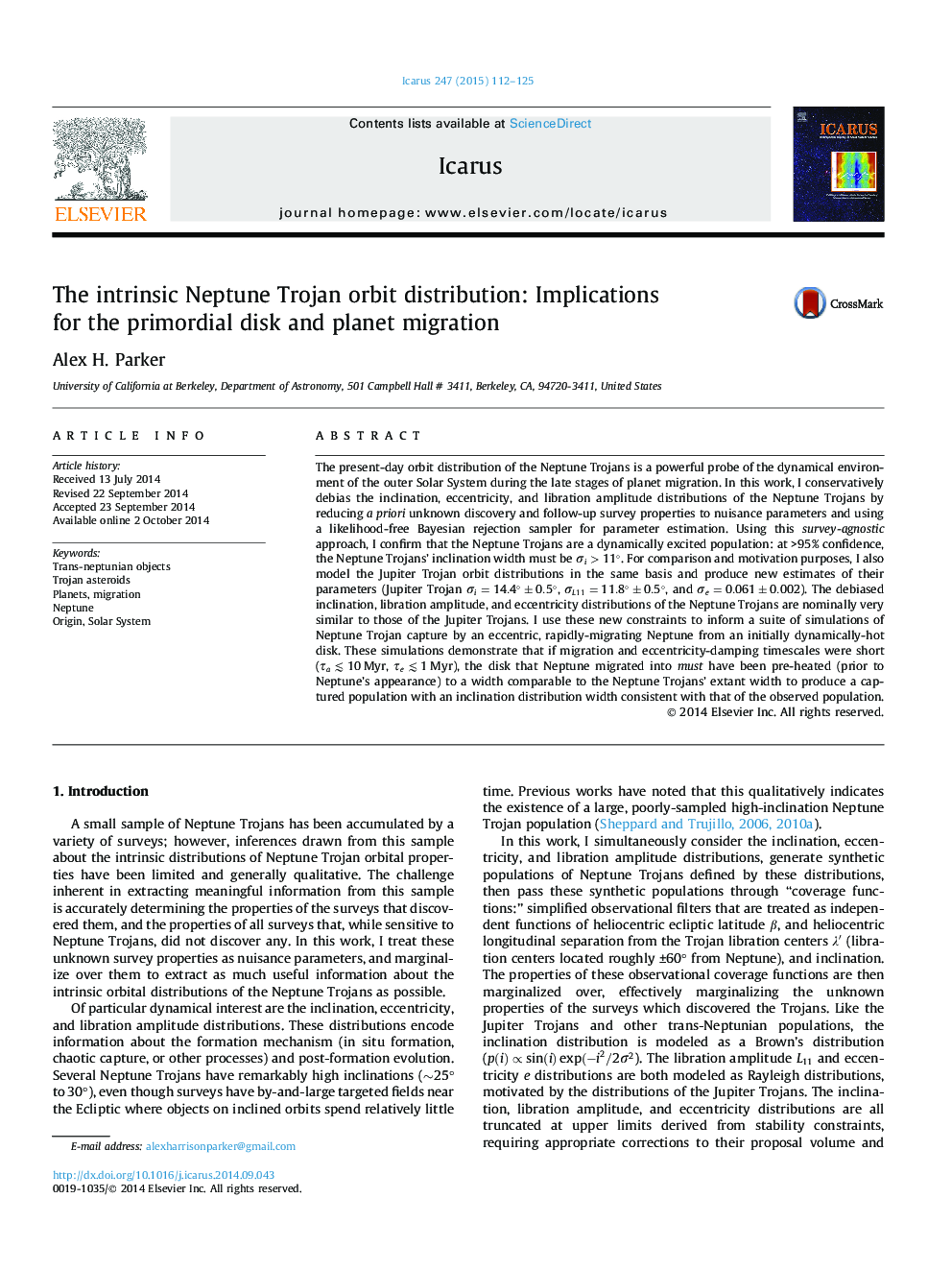| Article ID | Journal | Published Year | Pages | File Type |
|---|---|---|---|---|
| 8137047 | Icarus | 2015 | 14 Pages |
Abstract
The present-day orbit distribution of the Neptune Trojans is a powerful probe of the dynamical environment of the outer Solar System during the late stages of planet migration. In this work, I conservatively debias the inclination, eccentricity, and libration amplitude distributions of the Neptune Trojans by reducing a priori unknown discovery and follow-up survey properties to nuisance parameters and using a likelihood-free Bayesian rejection sampler for parameter estimation. Using this survey-agnostic approach, I confirm that the Neptune Trojans are a dynamically excited population: at >95% confidence, the Neptune Trojans' inclination width must be Ïi>11°. For comparison and motivation purposes, I also model the Jupiter Trojan orbit distributions in the same basis and produce new estimates of their parameters (Jupiter Trojan Ïi=14.4°±0.5°, ÏL11=11.8°±0.5°, and Ïe=0.061±0.002). The debiased inclination, libration amplitude, and eccentricity distributions of the Neptune Trojans are nominally very similar to those of the Jupiter Trojans. I use these new constraints to inform a suite of simulations of Neptune Trojan capture by an eccentric, rapidly-migrating Neptune from an initially dynamically-hot disk. These simulations demonstrate that if migration and eccentricity-damping timescales were short (Ïaâ²10 Myr, Ïeâ²1 Myr), the disk that Neptune migrated into must have been pre-heated (prior to Neptune's appearance) to a width comparable to the Neptune Trojans' extant width to produce a captured population with an inclination distribution width consistent with that of the observed population.
Related Topics
Physical Sciences and Engineering
Earth and Planetary Sciences
Space and Planetary Science
Authors
Alex H. Parker,
